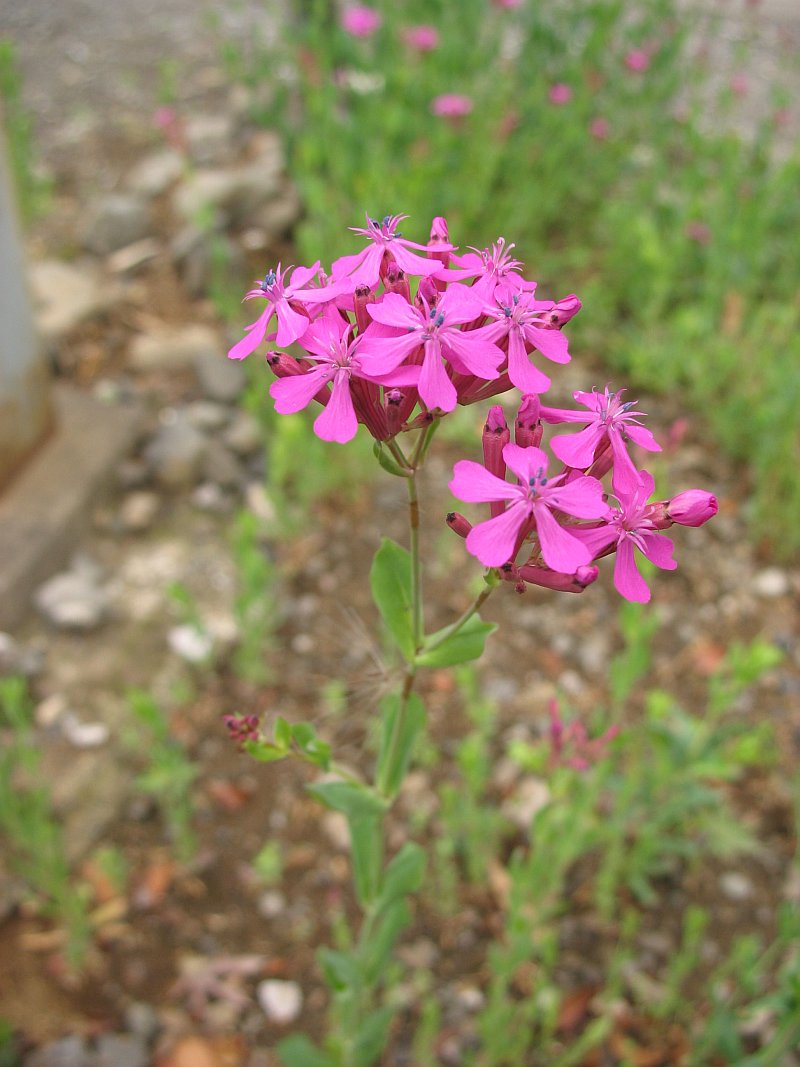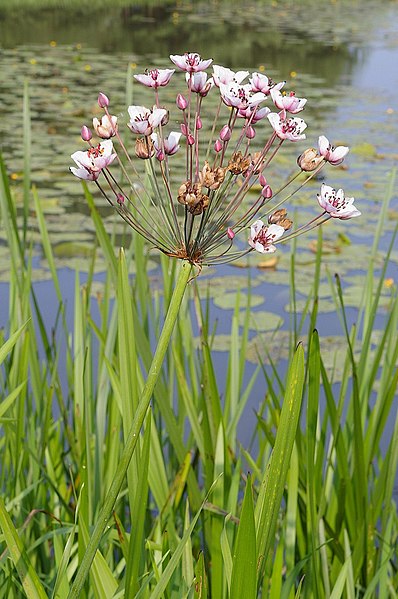This Saturday finally promised a day of reliably dry weather, so I decided to make the most of it by exploring the limestone country to the east of Leeds. It is not a well botanised area as first impressions are of an intensively farmed landscape, which it is, but there are also extensive woodlands, relicts of limestone grassland, pretty villages where cottage gardens overspill their boundaries, and the arable fields themselves are not without surprises. Bravely, I ending up deciding on a 16km route from Micklefield to Sherburn in Elmet, South Milford, Lumby, Ledsham and back to Micklefield. But the walking was easy and relatively flat and, while I did not find any really good arable fields, I found lots of interest.
Things got off to a quick and excellent start in Micklefield when I found Green Nightshade (Solanum nitidibaccatum) next to the path past the new housing development. This species was virtually unknown in the county 5 years ago, but it has been turning up on light soils in the east of the county. I'm not sure if its a new colonist, or if it has just been missed. The plants here probably arrived with the sand used to construct the path. I found this species again later in an arable field in South Milford.
Heading away from Micklefield along the footpath towards Huddleston Hall I was surprised to find the wheat crop (an unusual awned form) over-topped by thousands of Rye (Secale cereale) plants. I assume it came in as a crop contaminant rather having been a crop in a previous year. I've never seen it grown at field scale locally, this being premium wheat and potato country.
Along the boundary of Huddleston Old Wood a bramble caught my eye. On first glance I thought I had found a pink-flowered Soft-haired Bramble (Rubus vestitus) (also, and more usually, available in white), one of the few bramble species that is relatively easy to both recognise and remember. This species has rather distinctive near-circular terminal leaflets with a thick fuzzy texture. However in this case, the leaves turned out to be rather thin and without the expected pubescence. Instead they were bright chalky white underneath. This and the vibrant pink-flowers indicated a hybrid with Elm-leaved Bramble (Rubus ulmifolius), another obligingly straightforward species. Hybrid status was also suggested by the poorly developed fruit, with only a few druplets swelling. A shame, as both parent species produce good fruit.
My journey down Laith Staid Lane towards Sherburn in Elmet rewarded my with one of my favourite plants, Deadly Nightshade (Atropa belladonna), in two discrete locations. Just a shame that it was past flowering (just one tatty flower left). But there is no mistaking that large foliage.
Heading further down the lane my eye was drawn to some typical limestone grassland species clinging on in rough grassland on a nutrient enriched bank. Looking more closely I was surprised to see several large plants of Cat-mint (Nepeta cataria), a real rarity and last reported for the county no more recently than the 1990's. As all previous locations and associated details are very vague (somewhere in a 2km grid square in a 20 year period is the best we have), it was good to get a detailed grid reference for this location. Its to be hoped that it still persists elsewhere; maybe someone else will get lucky and find it.
The final interesting find along this lane was this enormous hogweed, easily 2m tall and towering over the adjacent hedgerow. An impressive plant, with the leaf in the bottom right of the photo probably as tall as a normal Hogweed (Heracleum sphondylium) plant. This is the taxon given in Sell & Murrell as Heracleum branca-ursina, but with the comment that it needs further research. It almost certainly does not merit full species status, but for the time being its the only name we have. In reality it is probably just a very distinctive, and likely alien, variety or forma of Hogweed.
On the outskirts of South Milford I came across this unusual form of Feverfew (Tanacetum parthenium f. breviradiatum).
And then further into the village in the roadside gutter of Woodside Close was Sea Campion (Silene uniflora). It must have escaped from a garden somewhere nearby.
But the best was yet to come, with an area of block paving on the High Street yielding a colony of American Cudweed (Gamochaeta purpurea). This seems to be the first record for Yorkshire.
Crossing under the motorway to Selby Fork I was back to interesting native species, with a good stand of Juncus x diffusus, the hybrid between Soft Rush (Juncus effusus) and Hard Rush (Juncus inflexus).























_IMG_6544.JPG/800px-Euphorbia_stricta_(Steif-Wolfsmilch)_IMG_6544.JPG)

